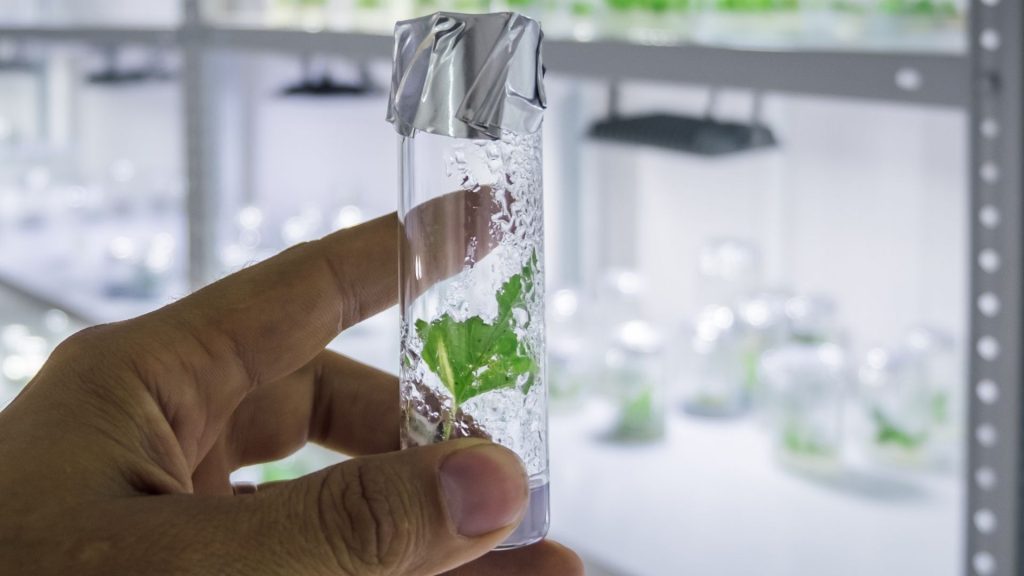Breakthrough artificial leaf follows sun for over 800% solar energy efficiency boost – Interesting Engineering

The new artificial leaves can work in water and on land, but have some way to go before real-world use.a day agoa day agoa day ago2 days ago2 days ago2 days ago2 days ago2 days ago2 days ago3 days agoan hour ago2 hours ago4 hours ago4 hours ago4 hours ago5 hours ago5 hours ago5 hours ago5 hours ago6 hours agoChristopher McFaddenShaded areas of the leaf stay expanded, causing it to bend toward the light. (Representational image)Vladimir Zapletin/iStockChinese researchers have developed a new kind of artificial leaf that can track the movement of the sun, much like real leaves. Able to produce electricity and potentially split water into hydrogen and oxygen, this new leaf could revolutionize fuel production.The new artificial leaf combines flexible solar-powered electrodes with a protective gel coating. It also incorporates an innovative supporting structure from carbon nanotubes embedded in a temperature-sensitive polymer.When the artificial leaf is exposed to sunlight, these nanotubes are locally heated, causing the polymer to contract. Areas not exposed to direct sunlight remain in an expanded form, which results in the leaf “bending” towards a light source.This process effectively keeps the leaf automatically facing the light source without the need for motors or other devices. According to the researchers, this mechanism is similar to how plants, especially aquatic ones like Micranthemum glomeratum, track the sun.In their accompanying paper published in the journal Advanced Functional Materials, the researchers showed that the new leaf is a marked improvement over more conventional rigid systems. For example, they found that at a 45-degree angle of incidence to light, the device maintains 47% higher water-splitting efficiency than fixed alternatives. If light strikes the leaf at 90 degrees, the tracking system produces 866% more hydrogen and oxygen fuel.The leaf was developed using a new fabrication technique to deposit photoactive materials on lightweight plastic instead of glass. They also created an artificial replica of plant cell cytoplasm using hydrogel coatings.This coating is also permeable, allowing water to enter and “waste” gases to escape the system. During operation, the leaf’s photoanode (a device that splits water) retained 73% of its activity after 65 hours of continuous operation.Inspired by nature, the artificial leaf also works exceptionally well underwater, an environment where traditional solar panels and other artificial leaves often struggle.According to the researchers, their new leaf also demonstrated stable hydrogen and oxygen production through complete water splitting, with products concentrating on each of the electrodes.As impressive as this all sounds, the team notes that significant challenges remain before the technology can be scaled. For example, the nanotube structural elements were shown to degrade in performance over multiple tracking cycles.This degradation also dramatically impacted the light tracking response time. The team also points out that wind and water currents would likely significantly impact real-world applications, substantially reducing their motion and efficiency.That being said, the core innovation demonstrates how mimicking nature’s solutions can overcome persistent technical barriers. This interesting development helps advance artificial photosynthesis by addressing the fundamental problem of angular dependence in solar energy capture. If technology like this could be scaled up and made more robust, it could usher in an era of new solar energy and solar fuel production systems that can operate autonomously without mechanical tracking systems. This would enable industries to produce energy and biofuels more efficiently and cheaper.The full study can be found in the journal Advanced Functional Materials.Stay up-to-date on engineering, tech, space, and science news with The Blueprint.By clicking sign up, you confirm that you accept this site’s Terms of Use and Privacy PolicyChristopher McFadden Christopher graduated from Cardiff University in 2004 with a Masters Degree in Geology. Since then, he has worked exclusively within the Built Environment, Occupational Health and Safety and Environmental Consultancy industries. He is a qualified and accredited Energy Consultant, Green Deal Assessor and Practitioner member of IEMA. Chris’s main interests range from Science and Engineering, Military and Ancient History to Politics and Philosophy.21 hours agoa day agoa day agoa day agoPremiumIE PROFollow
Source: https://interestingengineering.com/innovation/artificial-leaf-follows-sun-energy


